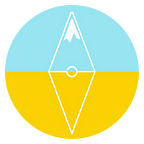MOJAVE TRAILS NATIONAL MONUMENT: Photographs from California’s Desert
There is something about deserts that grabs our imagination unlike anything else. Maybe it’s their endless horizon, or the fact that the line between life and death is constantly blurred by the unforgiving sun.
Thousands of species have adapted to scarcity in order to make a living in these arid lands. Humans are no exception. The name ‘Mojave Trails’ was given to reflect the history of long travels and temporary habitation, from the ancient native tribes, to the Spanish explorers, the railroad builders, the ‘Mother Road’ — Route 66, connecting the east to the west and the hopeless to hope, all the way to World War II training camps, and to today’s visitors in search of something larger than life. The morning we hiked up the dunes of the Cadiz Wilderness, the trails dotting the sand and crisscrossing in every direction were of a different nature, but told a similar story. Dozens of species in the desert become active at night. Pinacate beetles, desert kangaroo rats, snakes, lizards, coyotes and foxes, all left a mark in search for food, water and paths toward distant lands.
The day before we had walked the lunar landscape of the Amboy Crater, one of North America’s youngest volcanos and a precious study site for volcanologists. The arid valley was enclosed by a fortress of mountains that seemed to be catching fire at sunset. The Mojave desert is the driest in North America, with temperatures often jumping above 100 degrees F (40 degrees C). It’s also one of the most intact ecosystems left in California, spreading into southern Nevada as well. In 1994, Sen. Dianne Feinstein (D-CA) started her work to pass legislation that would better protect this desert. Through the California Desert Act, Joshua Tree National Monument was elevated to the status of a national park, the Mojave National Preserve was created and the foundation was laid for increased protections for the desert. In 2016, with substantial support from The Wildlands Conservancy, who purchased and then donated over half a million acres, three new national monuments were designated: Sand to Snow, Castle Mountains and Mojave Trails. Then, a few months later, two of these national monuments were listed for review by the current presidential administration, alongside 25 others. With over 75% of Californians favoring the monuments, they were removed from the review list eventually and the Mojave Trails is currently not recommended for any changes. Below is a selection of photographs showcasing the beauty of the places protected by the monument.
If you want to learn more about the Mojave Trails National Monument, read the interview on our blog with Jack Thompson, one of the regional directors of The Wildlands Conservancy.
